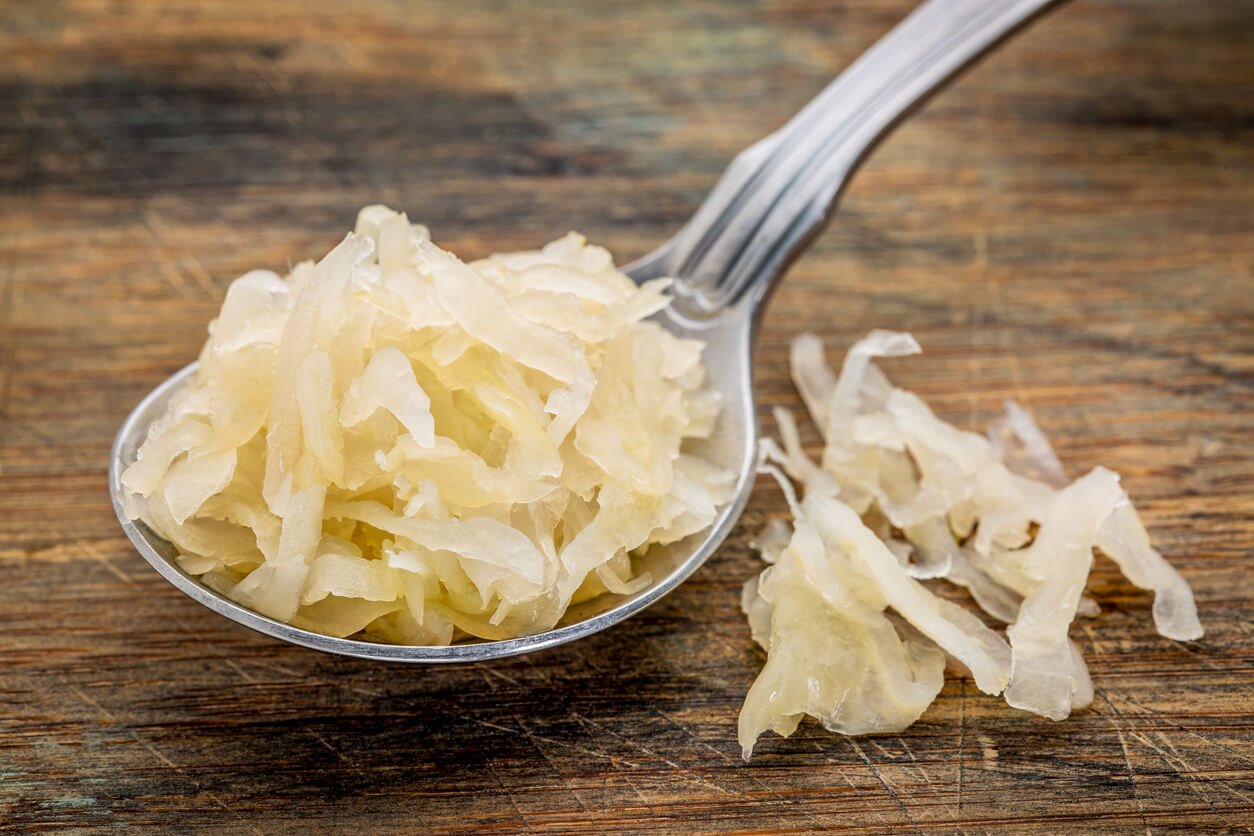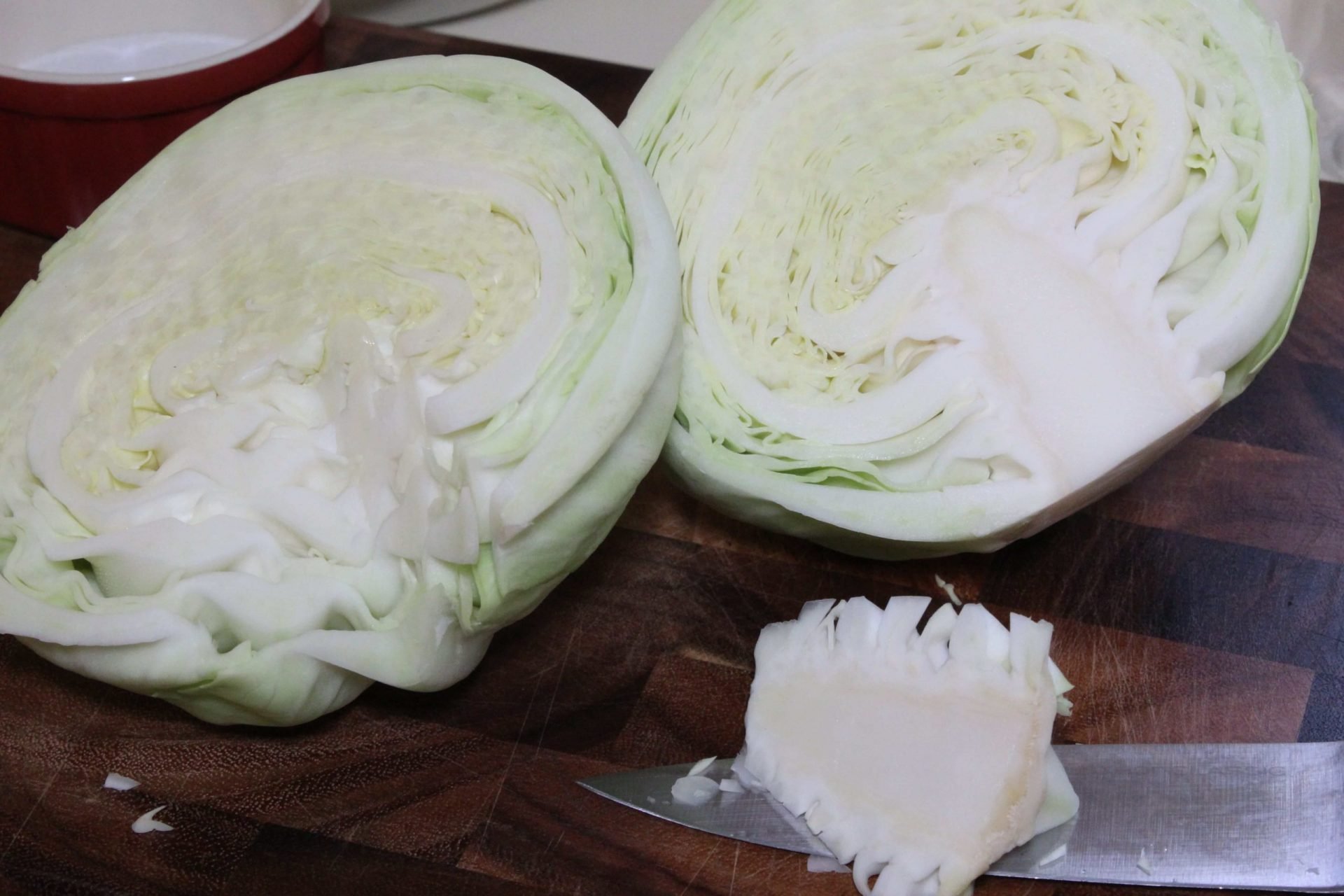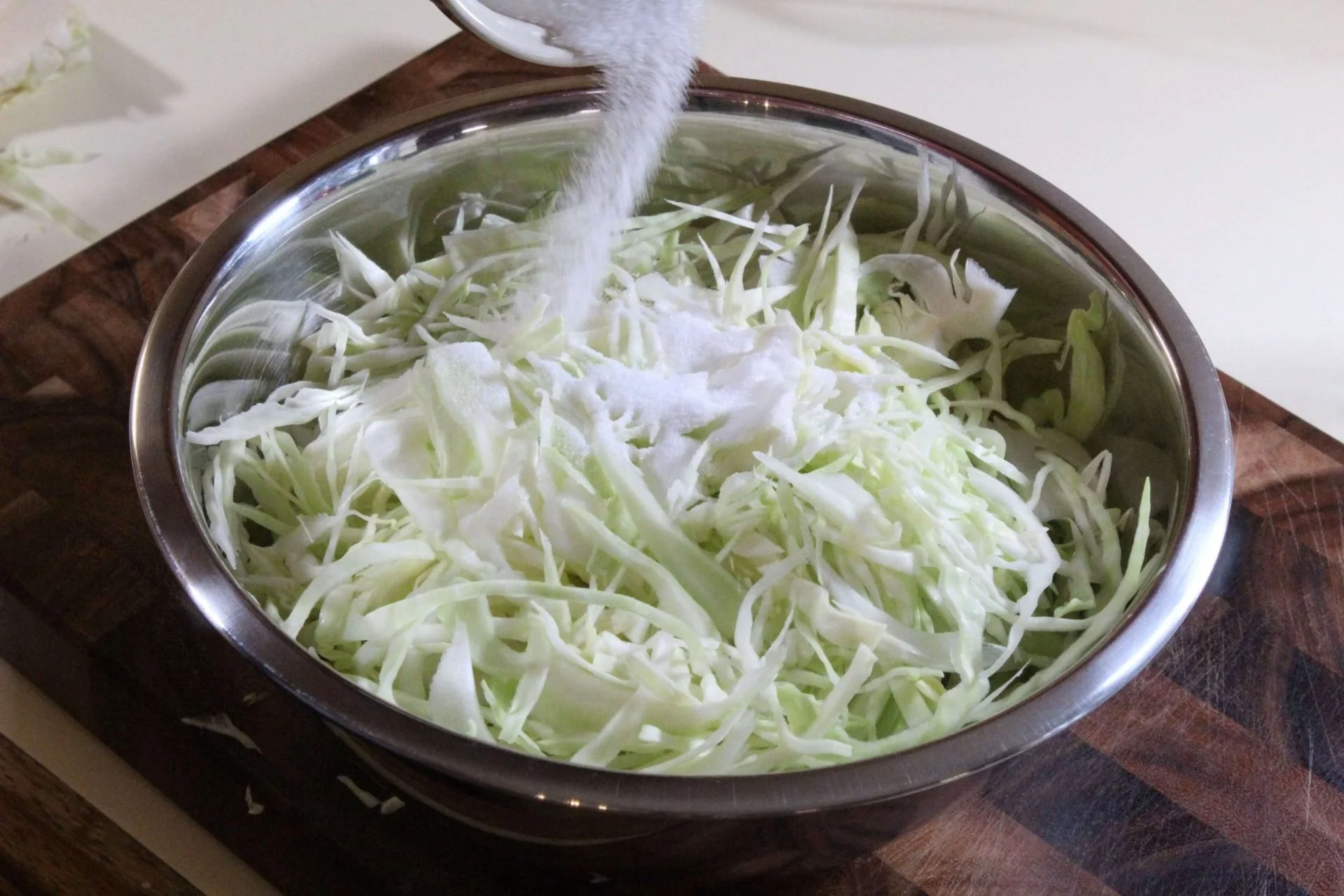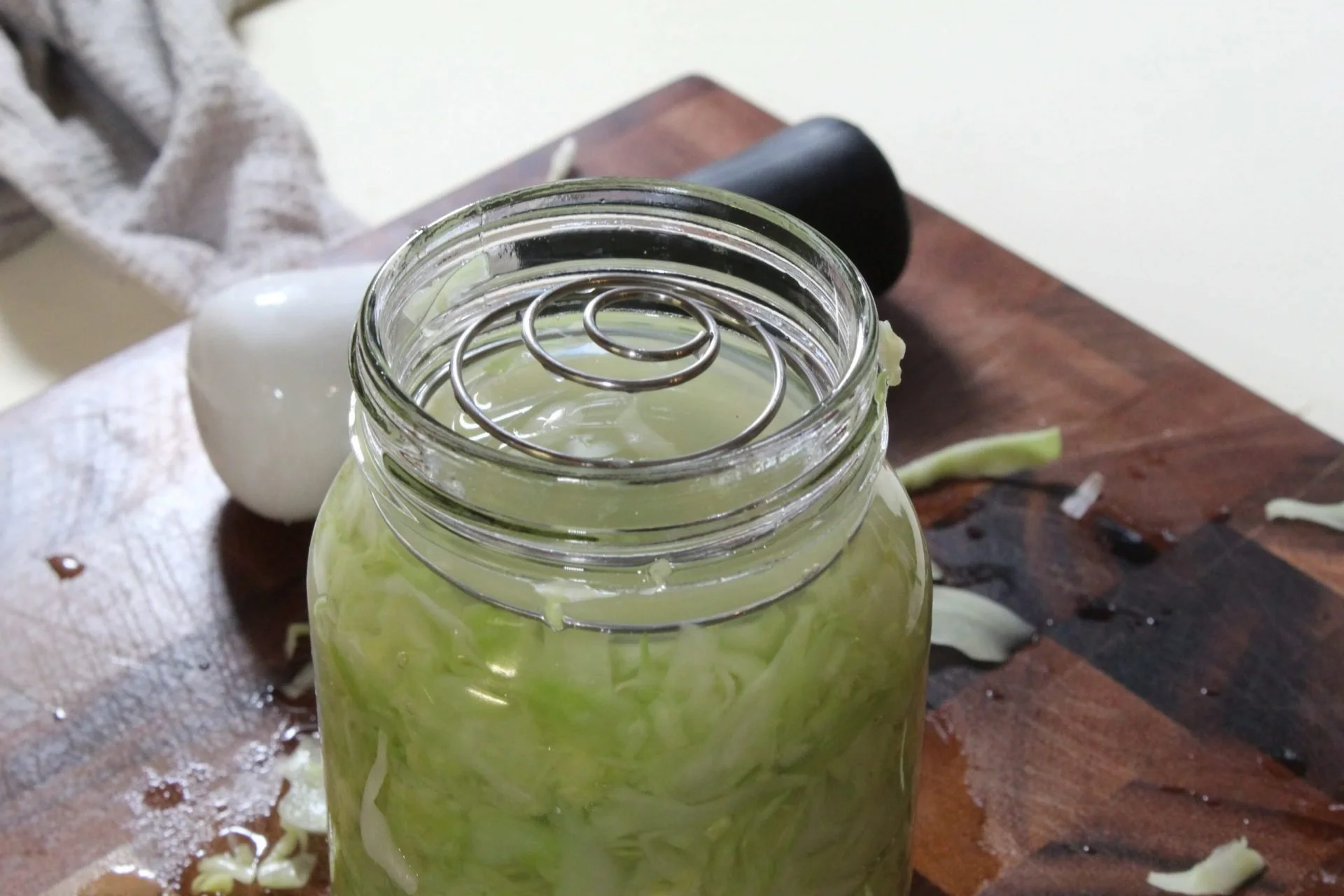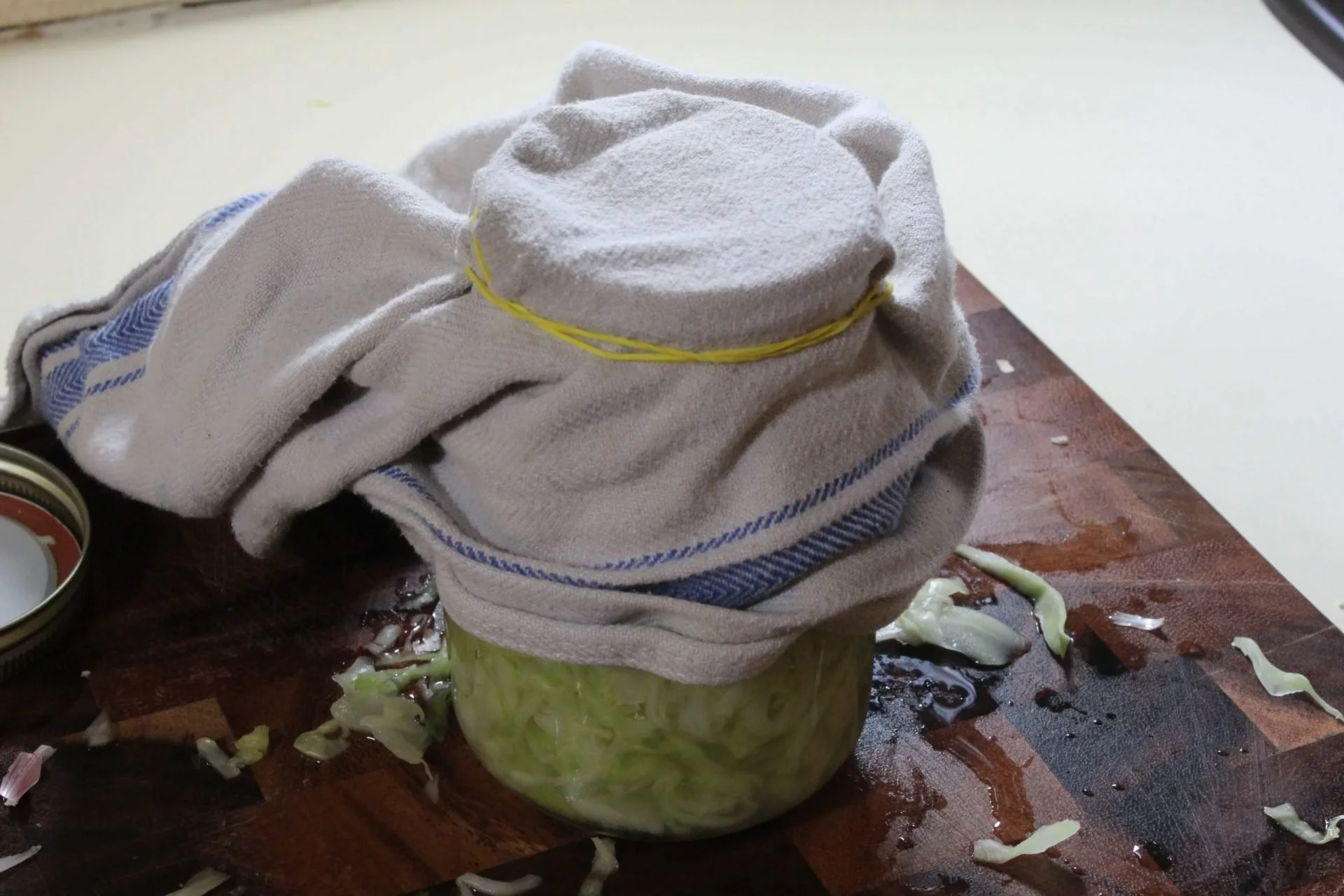How To Ferment Your Own Sauerkraut
Discover > Texas Home Cooking > Fermenting > How To Ferment Your Own Sauerkraut
Sauerkraut (how long does sauerkraut last?) is raw, shredded cabbage fermented through a method called lactic acid fermentation. Fermentation by lactobacilli is introduced naturally, as these air-borne bacteria culture on raw cabbage leaves where they grow. The Chinese originally fermented cabbage in rice wine over 2000 years ago. Fermenting sauerkraut at home started in the 16th century. Since then, Europeans adopted the method and gave it its own twist for the familiar sauerkraut we all know today.
If you want to learn more about cabbage, check out Texas Real Food's Promptuary entry on Cabbage HERE.
Fermented foods (What wine goes well with fermented foods?) have a far longer history than many of the foods on our shelves today. Before refrigeration was invented in the 18th and 19th-century people relied on pickling, curing, and fermenting to preserve their foods. Especially on long exhibitions. Sauerkraut is one of the most well-known instances of this.
Fermenting Sauerkraut at Home: Recipe for Fermented Cabbage
The first step to how to make sauerkraut at home is to make sure everything you’re using is cleaned with hot water and soap, then half, and core the cabbage. A good medium-sized head that weighs about two and a half pounds is good. That’ll make around 1 regular mason jar of sauerkraut.
Next shred the cabbage into thin strips. This can be done in a number of ways, like a chef’s knife, cabbage knife, vegetable peeler, or even a cheese grater. Ideally, you want small, uniform strips that will ferment evenly. In my opinion, it’s easiest to use a kitchen knife or vegetable peeler, but you can use a mandolin slicer or a cabbage knife as well depending on what you have on hand.
If you are going to get an extra accessory for this recipe for fermented cabbage, I'd suggest getting an OXO Mandolin Slicer, not only does it shred cabbage into equal strips in seconds, but it's a very versatile kitchen tool that has hundreds of different applications in the kitchen.
To make sauerkraut in jars, place your shredded cabbage in a bowl and add the salt. Whenever you ferment the salt content should sit at around 2-3% by weight. That’s around 1 tablespoon of salt per pound of cabbage.
This is the most difficult step of fermenting sauerkraut at home. Use your hands to press and massage the raw cabbage and salt. This will take you around 10-15 minutes and your arms will start to feel the burn due to vigorous exercise. What you’re trying to do is squeeze out all the water you possibly can from the cabbage.
Place the pressed cabbage in your chosen, clean jar and use something to press it down into a jar. You can use a pestle, certain types of rolling pins, anything long and clean you can find to press the cabbage under the waterline. Wide-mouth mason jars like the Ball 32oz wide mouth Mason Jars should be perfect for fermenting your own sauerkraut.
At this point on how to make sauerkraut at home, you can add spices like fresh garlic, peppercorns, maybe some dill (how long does dill last?)… it’s up to you. Once you’ve pressed the cabbage down into a jar you’re going to need some form of weight to weigh down the cabbage so it’s not exposed to any air. This will deprive the sauerkraut of oxygen to help minimize yeast exposure. You can buy weight specially designed for this, but there are a lot of things around the home you could use. Personally, I love using fermentation weights that are made out of food-grade glass, they're easy to clean and they do the job perfectly.
Finally either seal the jar with a lid equipped with an airlock (called a fermentation lid) or stretch a tea cloth over the top and seal it with a rubber band. This will allow airflow and make sure nothing bursts due to rising pressure because you know, CO2 is a byproduct of fermentation. A silicon fermentation lid like the Masontops Pickle Pipes can ensure that your sauerkraut turns out perfectly fermented without the danger of an exploding jar or contamination.
Fermenting sauerkraut at home requires leaving the sauerkraut for at least 2-3 weeks to get that sour, or better yet, Sauer flavor. Put a label on it or set a marker on your calendar so you can keep track of how long the cabbage is fermenting. For that extra artisan touch, you can use some Chalkboard-style label stickers to label your jars.

